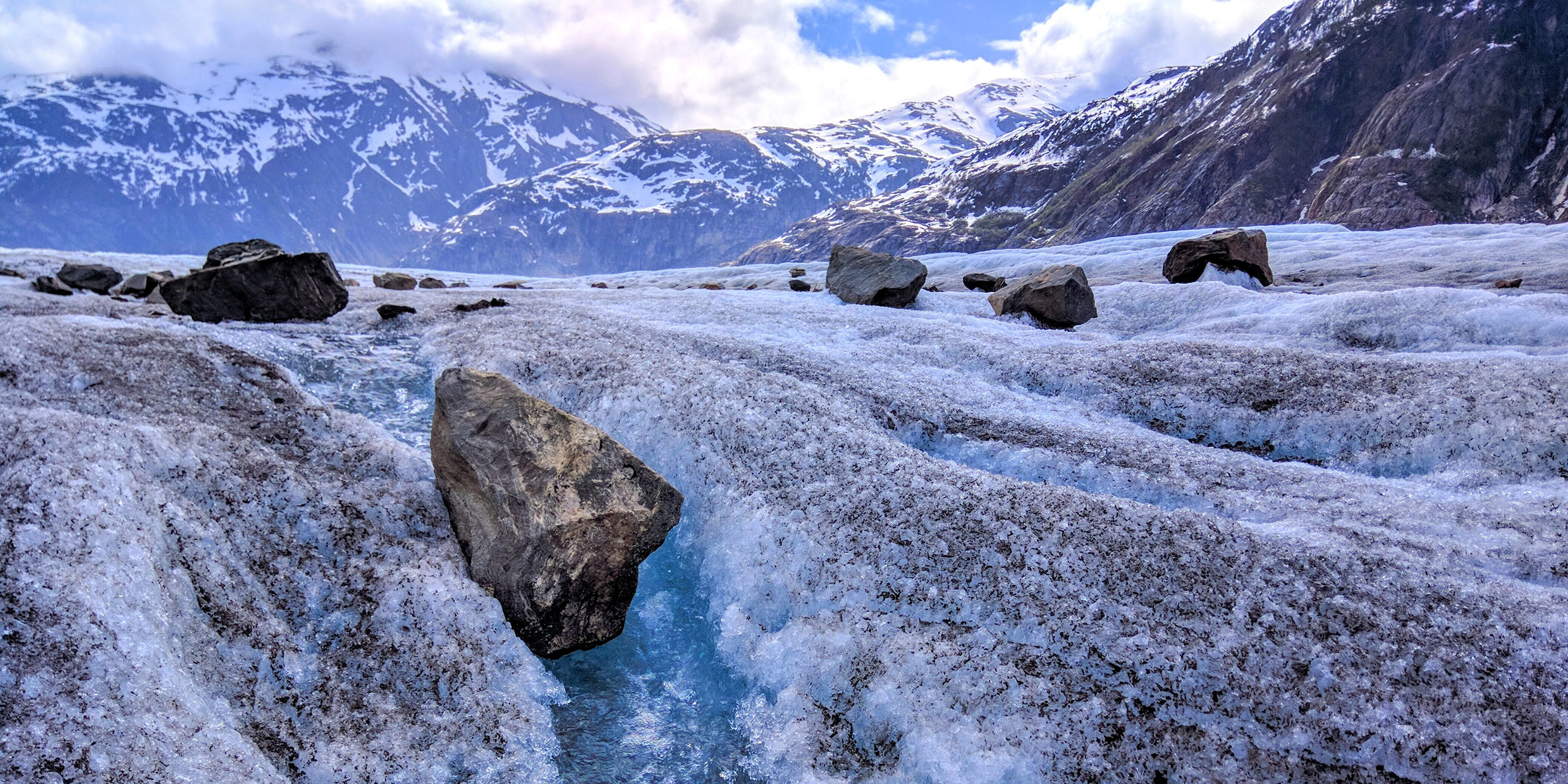Originally published 19 December 1983
Every rock, every pebble, every grain of sand has a story to tell of the evolution of the earth. Every blade of grass is a poem of the past. Our own bodies are museums of our history, our cells are the scrapbooks of our microbial ancestors, we breathe the exhalations of bacteria that swam in ancient seas. The story of the earth is waiting to be read.
Today, on a woods walk I stopped to rest on an outcrop of smooth green rock. The rock was marked with fine parallel scratches. The glistening polish of the rock and the scratches were the work of ice.
Only 12 thousand years ago a massive continental glacier lay upon New England. The ice moved down from northern centers of accumulation, pushing forward in mile-thick lobes like bulldozers, deepening and rounding valleys, ripping boulders from hillsides, crushing vegetation, grinding and polishing the surface of the earth. My green outcrop is only one of countless places in New England where the sculpting work of the ice is evident.
It was not the work of the ice that attracted my attention this day at the outcrop; it was the rock that asked to be read.
Ancient crust
The outcrop on which I sat was of a fine-grained volcanic rock, and spoke eloquently of a time half a billion years ago when this part of the earth’s crust was wracked by geological violence.
At the base of the outcrop, the volcanic rock was slashed across by a wedge-shaped intrusion of coarse-grained pink granite. The green volcanic rock and the pink granite are igneous rocks, formed by the cooling and crystallization of molten minerals.
It was clear from the way things looked that molten granite had wedged its way into preexisting volcanic rock.
Granite forms miles underground from the recrystallization of molten rock. Volcanic rock forms from lava on or near the surface of the earth. I was forced to conclude that the volcanic rock had made a trip down into the earth and back, picking up granite on the way.
Let me be more specific. First, in a period of volcanic activity, lava poured onto the surface of the earth and solidified to form the fine-grained green rock. Then, somehow, the volcanic formation was carried or buried miles underground. In an episode of deep heating, daggers of molten granite were squeezed into the green rock. The granite cooled. Then both formation were lifted toward the surface and the overlying layers of rock, perhaps a towering mountain range, were eroded away to reveal at last this particular piece of the earth’s crust.
A dramatic history
New England is geologically quiet now, but evidence abounds that it was not always so. On the faces of cliffs and in road cuts, in tunnels and in quarry holes, the rocks speak of violence. There are volcanic formations in Brighton, Mattapan, Newbury and Lynn. There are great northeast-southwest tending thrust faults with names like Ponkapoag, Mystic and Bloody Bluff. There are marine rocks piled high on hills and mountain boulders buried on lowland plains.
The most dramatic episodes of New England’s geologic history seem to have occurred between 400 million and 200 million years ago. At that time the continents of Africa and North America, riding moving slabs of the earth’s crust, approached and collided. The floor of an older Atlantic Ocean was squeezed out of existence, pushed back into the earth’s mantle beneath the colliding continents. Volcanoes erupted. Earthquakes shook the continental margins. Granites were forged deep in the crust. A range of mountains was lifted skyward. In the convergence of continents, the rocks on which I sat today were contributed to Massachusetts by Africa.
Few scientific discoveries have been more exciting than the discovery of the shifting and remaking of the earth’s crust. We live on eggshell. The rigid crust of the earth is as thin relative to the planet as the skin of a grape. Beneath the crust the rock of the earth’s mantle is hot, plastic and in motion. Heat, gravity and turbulence in the mantle break the crust into slabs called plates and drag them about the face of the planet. New crust is formed by volcanic activity. Old crust is consumed back into the mantle at the ocean trenches where plates converge. Continents ride on the shifting plates, sometimes colliding, sometimes rifting apart.
For hundreds of millions of years New England lay upon a “ring of fire,” upon a plate boundary where slabs of eggshell crust were squeezed together, then stretched, rent and pulled apart.
Today, the eastern seaboard of North America is quiet. Morocco and Massachusetts have gone their separate ways, and a new and growing ocean laps their shores.



